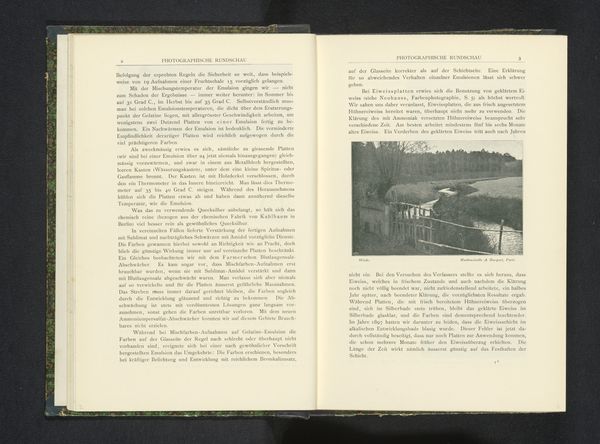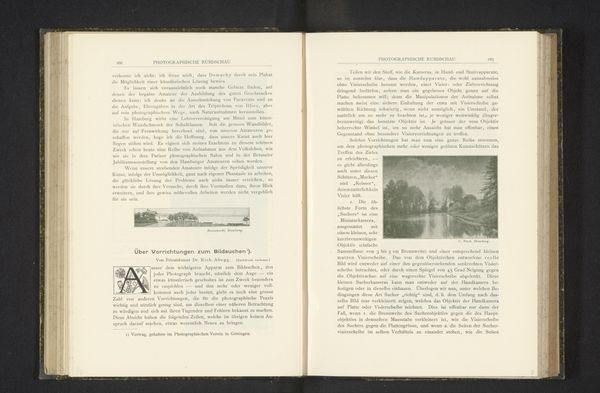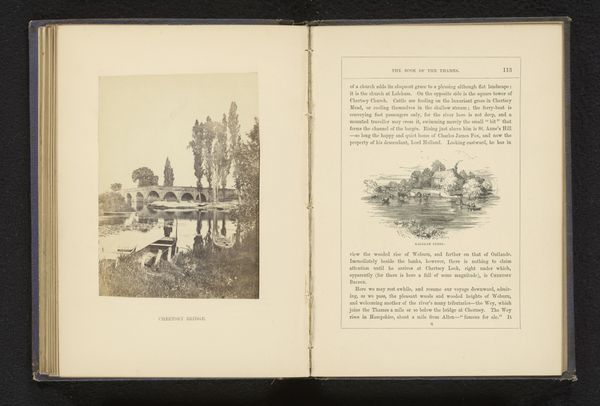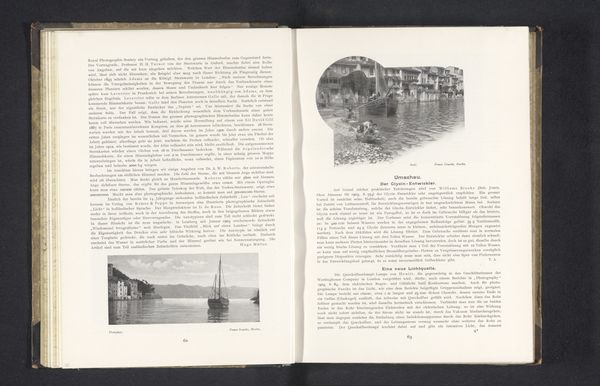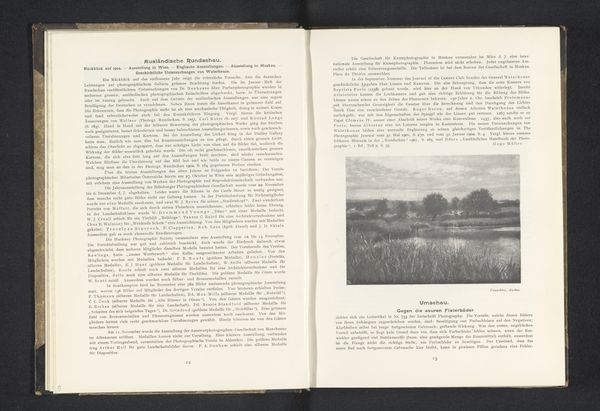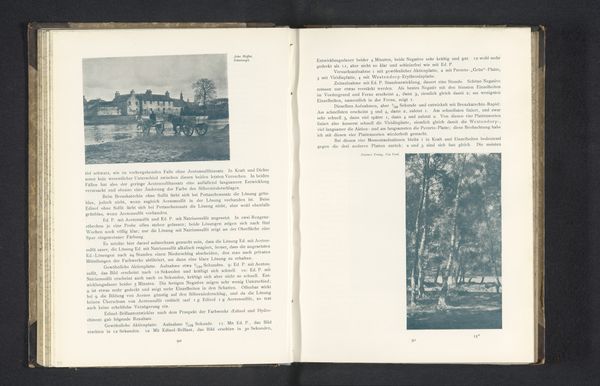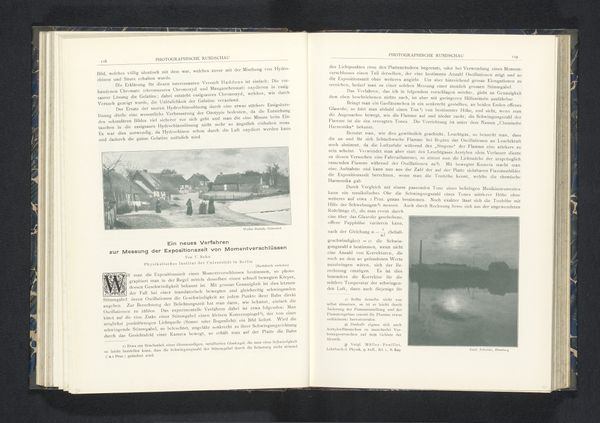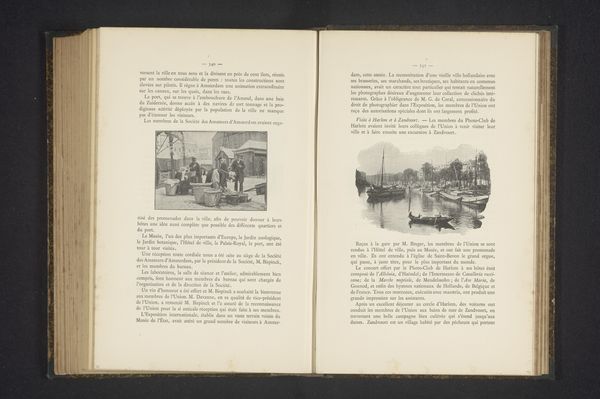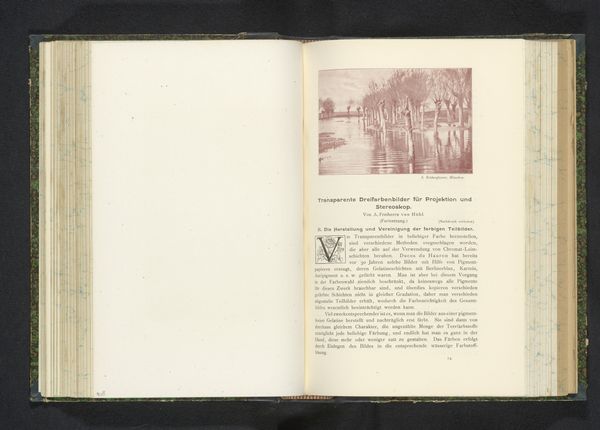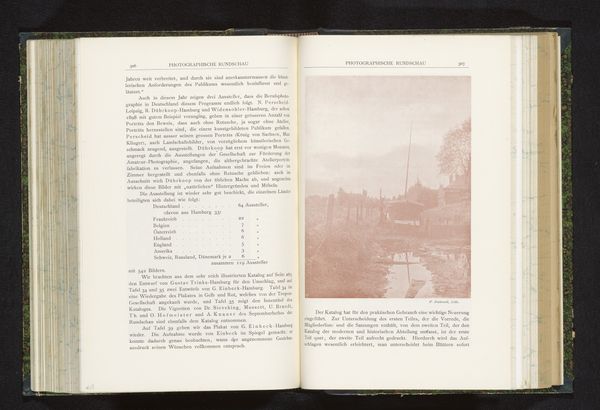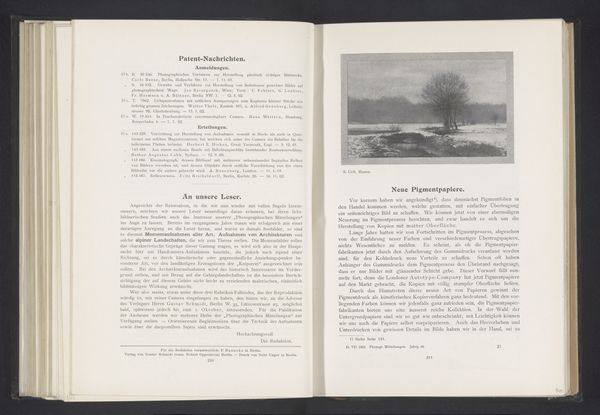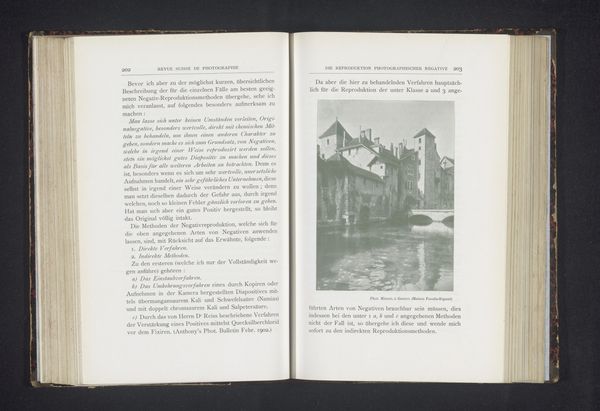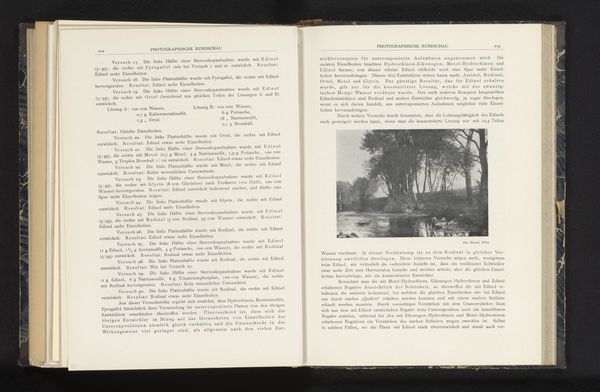
print, photography, gelatin-silver-print
# print
#
landscape
#
photography
#
gelatin-silver-print
Dimensions: height 86 mm, width 139 mm
Copyright: Rijks Museum: Open Domain
Curator: This is a piece called *Landschap, met op de achtergrond een huis*, or *Landscape with a House in the Background*, a gelatin silver print by Hans Watzek created before 1903. Editor: My immediate response is one of quiet nostalgia. The soft greys and blacks, the stillness of the water… it evokes a feeling of simpler times, maybe even a sense of being slightly lost in memory. Curator: The historical context of early photography, particularly the Pictorialist movement to which Watzek belonged, is critical here. These artists aimed to elevate photography to the status of fine art, often mimicking the aesthetic of paintings. The image's dreamy, almost hazy quality reinforces this artistic intention, setting up a dialectic relationship between technology, representation, and cultural hierarchy. Editor: I find it interesting how they were striving for recognition, but today this aesthetic reads very differently. Looking at the socio-political background, the Romantic era, and anxieties around industrialisation become more palpable. It makes me think of how representations of an "idealised" past often erase marginalized voices, reifying power structures in subtle but powerful ways. Curator: Absolutely. And examining the artistic landscape of the period reveals an intentional distance from industrial or urban subject matter. They focused on idyllic scenes precisely to offer an alternative, a nostalgic vision deliberately divorced from contemporary societal issues. Consider the gender dynamics at play. Watzek and other male photographers often presented women and landscapes as objects of contemplation, both positioned within this aesthetic of idyllic remove. Editor: So even a simple, tranquil scene such as this becomes loaded with complex histories, both artistic and socio-political, when we bring an intersectional, historical-grounded perspective to bear. Curator: Indeed. Art rarely speaks for itself; its historical, social, and political echoes truly bring the piece to life.
Comments
No comments
Be the first to comment and join the conversation on the ultimate creative platform.

